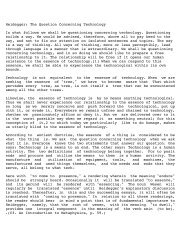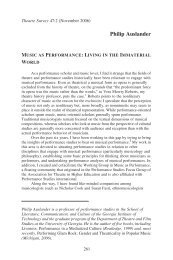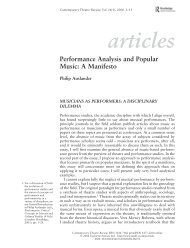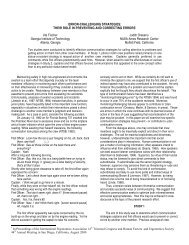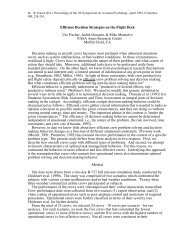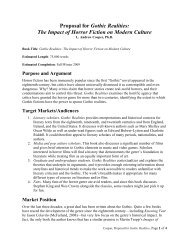INTERACTION DESIGN PRINCIPLES FOR INTERACTIVE ...
INTERACTION DESIGN PRINCIPLES FOR INTERACTIVE ...
INTERACTION DESIGN PRINCIPLES FOR INTERACTIVE ...
Create successful ePaper yourself
Turn your PDF publications into a flip-book with our unique Google optimized e-Paper software.
4.1.3 Color<br />
Donald Norman, author of Emotional Design: Why We Love (or Hate) Everyday<br />
Things, notes that “positive affect makes people more tolerant of minor difficulties and<br />
more flexible and creative in finding solutions. Products designed for more relaxed,<br />
pleasant occasions can enhance their usability through pleasant, aesthetic design.<br />
Aesthetics matter: attractive things work better” (2002).<br />
Colors play an important role in both aesthetics and functionality; in addition to<br />
playing a role in orientation, structure, and clarifying differences between visual<br />
elements, they can also facilitate access to information. Colors are frequently perceived<br />
unconsciously, and they always trigger emotions. There are three primary influences on<br />
our subjective perception of color: biological (e.g., we have more sensory cells for the<br />
colors red and green than for blue), cultural (e.g., black embodies death and evil in<br />
western culture, rebirth and resurrection in Egypt, and understanding in Hebrew culture),<br />
and individual (e.g., we all have our preferences and aversions for specific colors). So-<br />
called cold colors (e.g., green, blue) have an unobtrusive and low-key effect. They are<br />
very suitable as background colors and provide a quiet and unobtrusive framework.<br />
Warm colors (e.g., red, orange) have a cheerful and activating effect. They are quite<br />
dominant and loud, and should be used selectively (Thissen, 2004).<br />
In addition, literature in the field indicates that extroversion is predominantly<br />
associated with high color contrasts, saturated hues, and bold or sharp-edged shapes. By<br />
contrast, introversion is often related to de-saturated colors, green hues, and thin or round<br />
shapes (Karsvall, 1992).<br />
Interaction designers should keep these types of color perception in mind when<br />
designing iTV applications. Using colors selectively not only help to make an interface<br />
83



